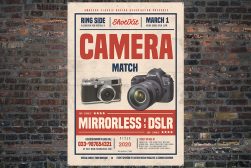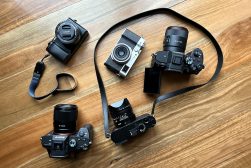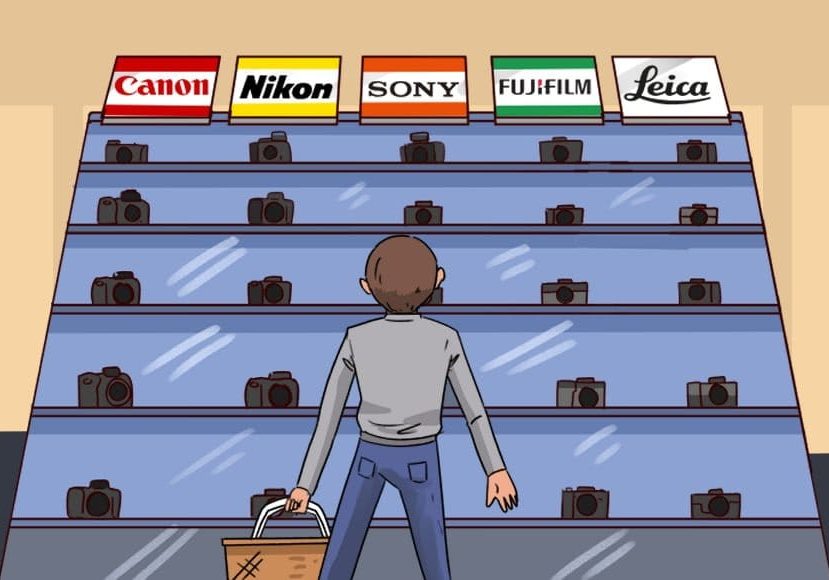
How to Choose a Camera in 2024 (Best Buying Guide)
A fun, simplified, in-depth camera buying guide which cuts through the jargon to help you choose the best camera for your photography in 2023.
Camera Gear Guides | Camera Guides | By Mark Condon | Last Updated: January 8, 2024
If you’re in the market for a new way to take photos in 2024, this camera buying guide is a must-read!
Choosing a new camera used to be so easy. With a limited selection, your decision usually just revolved around price.
Nowadays, there are hundreds of models to choose from, and to make matters even more confusing, your smartphone already takes pretty good photos!
With all the technical jargon surrounding photography terms and the parts of a camera, making a decision can be intimidating.
That’s where this guide will come in handy ;-)
Here at Shotkit, we’ve got over 100 years of combined photography experience.
We can definitely help find the right camera for you… so let’s get stuck in!
Recommended Cameras for all Budgets in 2024
| Image | Product | Features | |
|---|---|---|---|
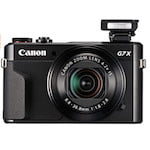 | Canon G7X Mark IIBest Compact Under $500 |
| View Price → |
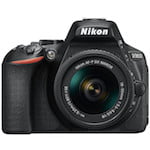 | Nikon D5600Best DSLR Under $500 |
| View Price → |
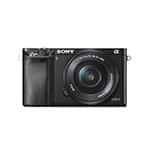 | Sony a6000Best Mirrorless Under $500 |
| View Price → |
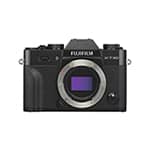 | Fujifilm X-T30Best Compact Under $1000 |
| View Price → |
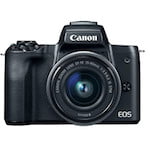 | Canon M50Best Mirrorless Under $1000 |
| View Price → |
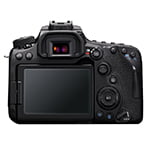 | Canon 90DBest DSLR Under $1000 |
| View Price → |
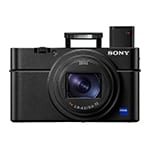 | Sony RX100 VIIBest Compact Under $1500 |
| View Price → |
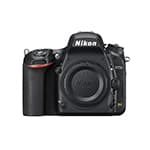 | Nikon D750Best DSLR Under $1500 |
| View Price → |
 | Fujifilm X100VBest Mirrorless Under $1500 |
| View Price → |
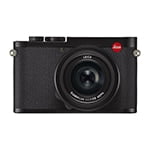 | Leica Q2Best Overall Compact |
| View Price → |
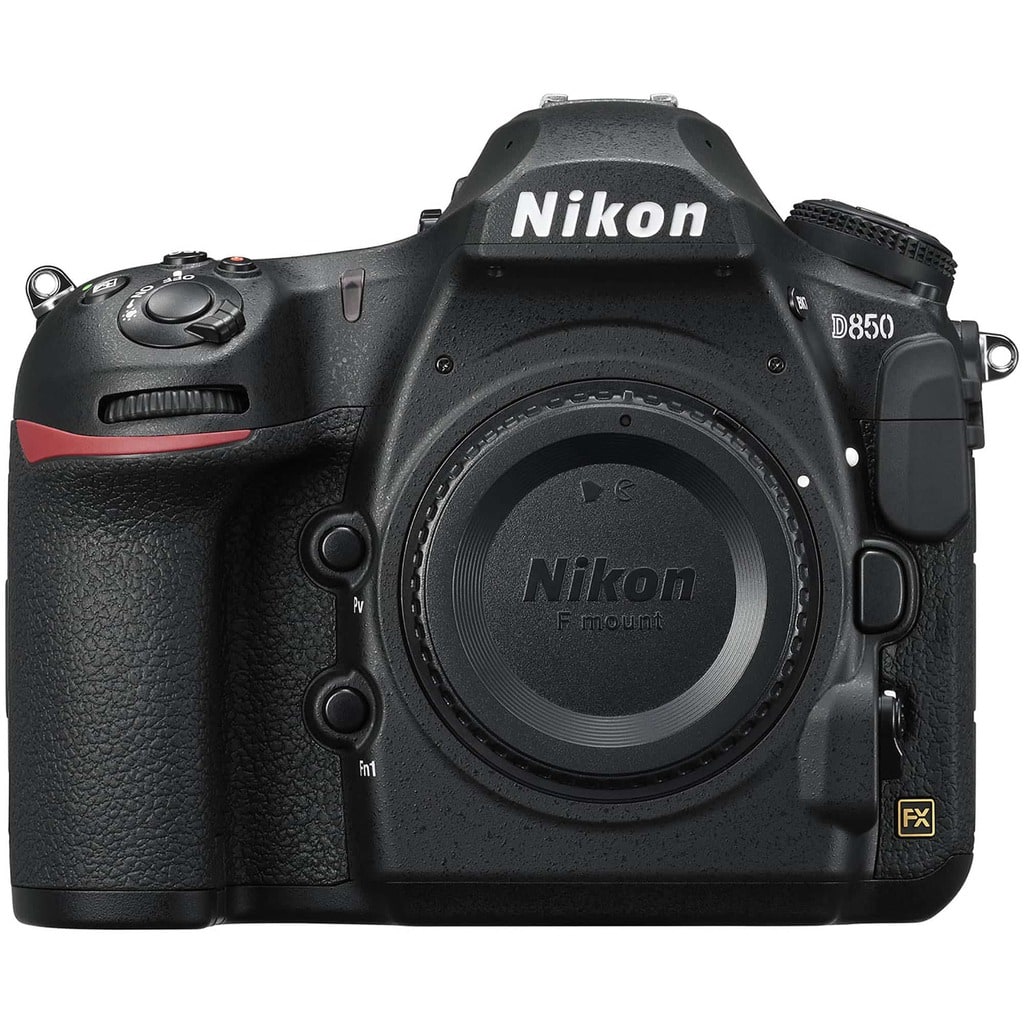 | Nikon D850Best Overall DSLR |
| View Price → |
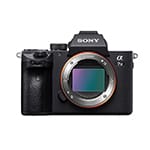 | Sony a7IIIBest Overall Mirrorless |
| View Price → |
What to look for when Buying a Camera

I’ve tested hundreds of cameras during my time as a professional photographer and reviewer.
Shopping for a camera can quickly become complicated. As with most things, the more options you have, the less likely you are to make a decision.
In this camera guide, I’ve made sure to include all the factors that can help you choose from the top cameras available this year.
However, if you’re in a rush, here’s a quick summary of the essentials:
5 Most Important Factors when Choosing a New Camera
1. Image quality that’s better than your camera phone
By reading camera reviews, you should be able to make this decision. There’s no point in carrying around a camera if it doesn’t take a nicer looking image than your phone, or at least offer features that your phone does not.
2. Ergonomics that suit your hands
If you’re unable to go to your local camera store to actually hold the camera, you’ll just have to make an educated decision based on the reviews you read. Is it big enough? Does it have a pronounced grip? Do the essential buttons look far enough apart?
3. Size that suits your habits
This is an important one. Are you a parent that’s always got a child in tow? If so, your camera should probably be light and/or compact. Do you usually carry a bag around with you? You could get away with something larger. Do you travel a lot? etc etc
4. Availability of lenses that suit your budget and future needs
If you choose a compact camera with a fixed lens, there’s no need to consider this. If you opt for an interchangeable lens camera, take a look at the other lenses on offer. Are they in your price range? Are there focal lengths you need? Are second hand lenses available?
5. The latest model within your budget
With camera technology moving so fast, I always recommend investing in the latest cameras. If your budget can’t stretch to the absolute latest, there are often bargains to be found with a previous model, but try and avoid anything older than this. There’s also the option of second hand… but, caveat emptor!
We wrote a guide on how to buy & sell used camera equipment that you may find useful. Also, keep in mind that although you can get cameras under $300, I recommend investing a little more than this to ensure it can produce better images than your smartphone.
Types of Camera
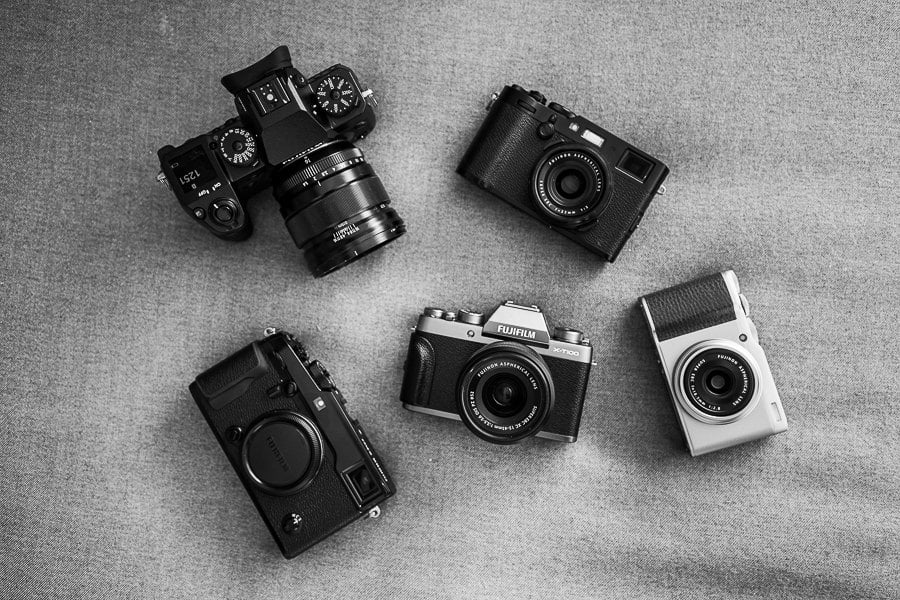
Fujifilm mirrorless cameras are a popular choice.
DSLR Cameras
DSLR stands for ‘Digital Single Lens Reflex’, which basically means that the camera uses the same lens for framing, focusing and taking a photograph.
None of this is really relevant to you as a first-time camera buyer, though – what is important is that DSLR cameras are still the most popular camera for amateurs and professional photographers here in 2024.
DSLRs are versatile, have good ergonomics, great battery life, and most importantly, they work with a wide variety of interchangeable lenses.
Entry-level models are available for budget prices, and you can get some great bargains on the second-hand market too.
On the minus side, they’re bigger, heavier, and don’t offer the best in auto-focus (and various other) technologies, like the other types of cameras below.
DSLR cameras feature APS-C or ‘full frame sensors’ – more on that below.
Mirrorless Cameras
A mirrorless camera doesn’t have the mirror that’s found inside a DSLR camera, which gives it various advantages. They can have fixed or interchangeable lenses.
I’ve written an entire article on DSLR vs mirrorless cameras, but to sum up:
Mirrorless cameras offer more useful technology, making your shooting experience simpler than DSLRs. They are also better value for money.
They’re usually smaller and lighter than DSLRs, making them a great choice if you travel a lot.
The general consensus is that mirrorless cameras are the future, and DSLRs are a dying breed… but that’s not to say the technology is perfect yet.
For the advantages they offer, mirrorless models suffer from poor battery life (around half the duration of the equivalent DSLR), and a shooting experience that’s a little… well… soulless!
However, if shooting with a ‘mini computer’ doesn’t deter you, my recommendation would be to go for a mirrorless camera, whether it’s your first camera or you’re upgrading.
Mirrorless cameras also feature APS-C or full frame sensors.
Micro Four Thirds Cameras
Micro Four Thirds cameras (aka Micro 4/3, MFT or M4/3) are a type of mirrorless camera that cover a wide variety of styles and options, but their common feature is their sensor size.
We’ll discuss why the size of the camera’s sensor is important below, but all you need to know at this point is that a Micro Four Thirds camera is like a ‘mini’ interchangeable lens camera.
Ergonomically speaking, Micro Four Thirds sensor cameras look like shrunken down DSLRs or mirrorless cameras, and their lenses are smaller, lighter and cheaper.
One thing to note: having a smaller camera system isn’t always good for everyone, with cramped controls and a less-pronounced grip often hindering those with bigger hands.
MFT cameras only have MFT sensors, which does limit their abilities, as we’ll learn below.
However, Micro Four Thirds cameras are still a popular choice for beginners through to professional photographers, here in 2024
Compact Cameras (aka Point-and-Shoot Cameras)
Compact cameras are hugely popular, and for good reason – their diminutive dimensions make them portable and convenient to have with you every day, much like your camera phone. They are often feature-packed yet easy to use making hem the best camera for beginners.
Since modern smartphones can take such good quality photos, it’s important to select a compact camera with better image quality, or features that your phone doesn’t possess.
These features could be a zoom lens, better low light shooting capabilities, faster burst shooting, RAW capture, etc.
Some people (including me!) simply prefer holding a ‘real’ camera to take photos, rather than a phone, and a small camera usually means you’re more likely to have it with you in your pocket or bag.
The line between compacts and small mirrorless cameras is blurred, but the strict definition of a ‘point-and-shoot camera’ is one with a fixed lens (i.e. you can’t change it for another lens.)
This limitation greatly simplifies the photography process and can make it a lot more enjoyable for those who aren’t interested in multiple lens options.
Bridge Cameras
Smaller than DSLRs but larger than compact cameras, they fill the gap nicely, offering high magnification zoom lenses (fixed, not interchangeable) and manual controls, but without the bulk of a fully-fledged DSLR.
Bridge Cameras are a great all-in-one option, and popular with enthusiast photographers who don’t want to worry about changing lenses, but still want the flexibility of a long-range zoom.
They typically have small image sensors similar to compact cameras, and seldom have an optical viewfinder (OVF), opting instead for an electronic viewfinder (EVF) and the rear LCD screen to take photos.
Action Cameras
These are usually small, waterproof and rugged, with video capture as their primary focus.
I wouldn’t recommend buying an action camera just for photography, since image quality is usually worse than the average smart phone, and images often look distorted due to the ‘fish-eye’ angle of view.
The beauty of smaller GoPro-type action cameras is that they can be mounted on your body or helmet, giving a unique first-person-perspective.
You can also get rugged and waterproof compact cameras, but these usually only offer comparable image quality to modern smartphones.
Price (Value for Money)

Opting for the latest camera model is advisable if it’s within your budget.
When buying a camera, it’s important to be realistic with your budget.
Spending too little will result in a camera with mediocre image quality, and spending too much… well, that’ll leave a dent in your wallet!
Unless you want something with similar image quality to most modern smartphones, you need to spend around $500 or more on a new camera.
If you’re prepared to buy an older model, you can get great bang for your buck, but the technology will already out of date.
I’d always recommend investing in the latest model where possible.
As for buying second hand, you need to be careful. DSLR cameras have a ‘shutter life’, based on the number of photos that have already been taken, and replacement parts can be expensive.
Second-hand mirrorless cameras have less moving parts that can fail, but if they’re out of warranty, you could still be left with a costly repair bill when something goes wrong.
What about camera bundles? While there are some great offers out there (check out this Nikon D5600 bundle for example), most bundles tend to include a lot of camera accessories that you’ll probably never use… or are low quality and will break after a couple of uses.
My advice is to spend the money on a recent camera model, and if you are tempted by a bundle, get one that includes a lens or two.
So, what do you get when you spend more money on a camera?
In general, you benefit from the ability to shoot faster, larger photos in lower light (without using a flash). Build quality will also be better.
If you’re not a professional photographer, I’d recommending spending between $500~1,000 on an interchangeable lens camera.
When you have more money, you should invest in new lenses to expand your possibilities.
If you’re not interested in lenses, spend the money on an advanced compact camera with a fixed lens, preferably the latest model.
Image Quality

With practice, you can make an image from a cheap camera look like one shot on something far more expensive. I took this on a $400 entry-level DSLR and kit lens.
Unless you’ve actually used the camera before, it can be hard to judge the quality of images it produces.
I’d recommend reading online reviews on sites like this, and buyer reviews on Amazon.
Another thing to consider is that the image quality of a camera depends a lot on the lens attached to it.
If you opt for a fixed-lens camera, you obviously have no choice in the matter, but for interchangeable lens models, the lens you choose is very important.
Most entry-level DSLR and mirrorless models come with ‘kit lenses’. This is usually a cheaply-made mid-range zoom lens with a slow, variable aperture. In short, it’s usually pretty crappy!
A kit lens can be a good way to get used to your new camera, but I’d recommend you invest in an affordable prime lens and a better quality zoom as soon as your budget allows. (See: prime vs zoom lens.)
In general, image quality increases the more you spend on a camera, up to around the $1,000 mark. From this price upwards, any improvement in image quality becomes more vague, except when shooting in low light.
(One of the main reasons professional photographers spend so much on cameras, is that more expensive models usually offer much better ability to capture good quality images in lower light.)
In summary, if you stick to the best digital cameras recommended in this guide, you don’t need to worry about image quality :-)
Size and Ergonomics
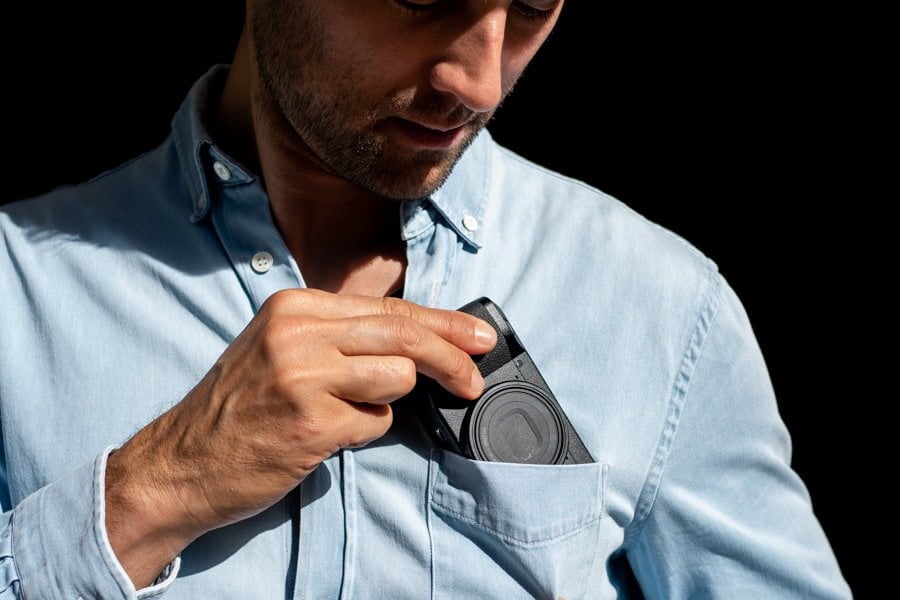
Point-and-shoots can be convenient to carry but harder to hold.
The size of a camera and how it feels in your hands is a seldom-discussed factor… but it’s actually really important.
The smallest compact cameras aren’t suited to big hands or older fingers lacking dexterity. At the other end of the scale, you won’t want to bring your camera out with you if it’s too big and bulky.
Size is more of a personal preference, and also very subjective. What’s considered big to a beginner, will probably seem small to a professional!
Personally, I love slightly larger compact cameras which suit my big hands. I also prefer mirrorless models with a more pronounced grip, which usually makes them slightly bigger.
A camera’s ergonomics relates to not only how it feels in your hand, but also button placement.
Some small cameras may feel OK to hold, but their buttons are too close together, rendering them awkward to use.
If you’re unable to get to a camera store in person, I recommend reading reviews and judging the size of a camera by its dimensions compared to your smartphone.
Sensor Size
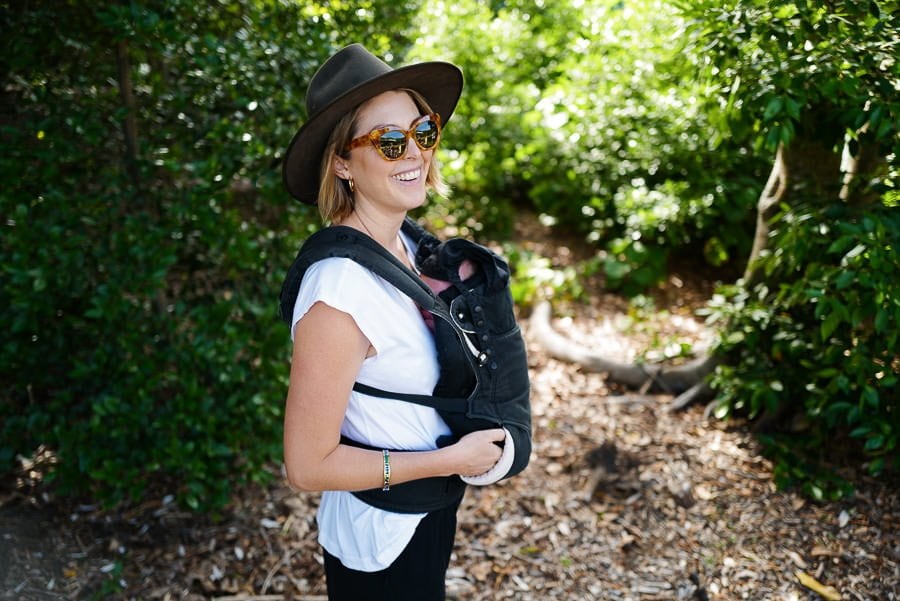
A full-frame sensor can produce incredible image quality… but so can an APS-C.
Digital cameras use a sensor to ‘record’ images. There are various types of sensor available for each type of camera, making it a rather confusing topic.
If you’re just getting started with photography, there’s no real need to obsess over sensor size – just use the other factors listed in this guide as a reference to buy your first camera.
For everyone else, here’s what you need to know – the larger the sensor, the better the image quality, especially in low light.
Also, the larger the sensor, the greater your ability to ‘blur the background’ (blur can also be added in Lightroom), but this is also highly dependent on the lens you attach to your camera.
Here are the 3 main lenses you’re likely to come across while shopping for a digital camera:
- 1 Inch (or smaller) – commonly found in budget compact cameras
- APS-C – found in advanced compacts, mirrorless and DSLRs
- Full Frame – found in advanced compacts, mirrorless and DSLRs
Professional photographers commonly use full frame or advanced APS-C sensor cameras.
If you have the budget, a full frame camera is a wonderful investment, but remember that full frame lenses are more expensive too.
My recommendation to most beginners and enthusiast photographers is to buy an APS-C sensor camera. These offer good size/weight advantages, great image quality, more affordable lenses, and excellent value for money.
The size of the sensor on an interchangeable lens camera will also dictate something called the ‘crop factor’.
Without wanting to get too technical, APS-C sensors ‘multiply’ the focal length of your lenses. A lens that says ’35mm’ may give you an actual focal length of 50mm.
This is great for shooting subjects that are far away, since you’re essentially getting more ‘reach’ on every lens you own.
On the flip side, if you want to get the widest possible lens, you’re a bit more limited with an APS-C sensor.
There’s also a difference in the ‘creaminess’ of out of focus areas (aka ‘bokeh’), and a difference in available dynamic range when choosing APS-C vs a full frame… but this is getting in to nerd-territory, so don’t worry about it for now!
Types of Lens
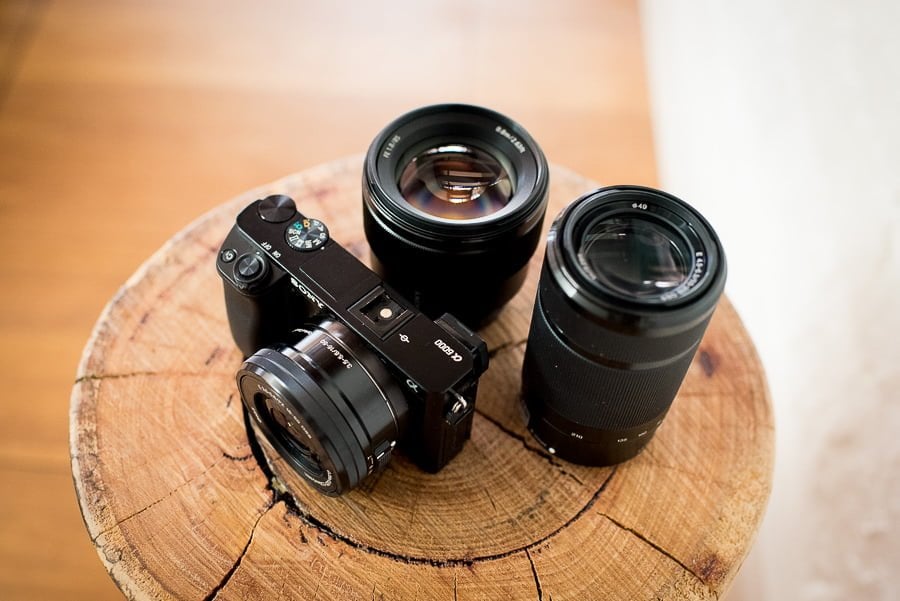
Different lenses allow you to expand the capabilities of your camera.
Since this article is to help you find the best digital camera, I won’t go too deep into all the various lens options.
Interchangeable lenses are a whole world of fun and creative opportunity, but the myriad of options can sometimes be unnecessary to photographers.
The main decision you need to make at this point is whether you’re happy to have a ‘fixed’ lens on the end of your camera, or if you want the flexibility of interchangeable lenses.
- Fixed Lens Cameras
These feature either a zoom or a fixed focal length lens (aka a ‘prime’), but either way, you’re stuck with that one lens.
Many point-and-shoot cameras have fixed lenses, as do bridge cameras.
I own a fixed length compact (Fujifilm X100V), and love the simplicity and efficiency of a single lens. Check the review here.
- Interchangeable Lens Cameras
When shopping for your first camera, it’s important to check both the availability and the pricing of lenses.
There are own-brand or ‘native’ lenses that are usually the most expensive, and arguably the best quality options, and there are often several third-party options too.
Being able to use different lenses vastly expands your creative opportunities. In some cases, it also lets you shoot a photo that wouldn’t have been possible otherwise.
Canon and Nikon offer the largest selection of lenses for their DSLRs, but the smallest selection for their mirrorless cameras here in 2024.
Sony and Fujifilm offer a much larger selection of lenses for the mirrorless system.
Speed and Performance
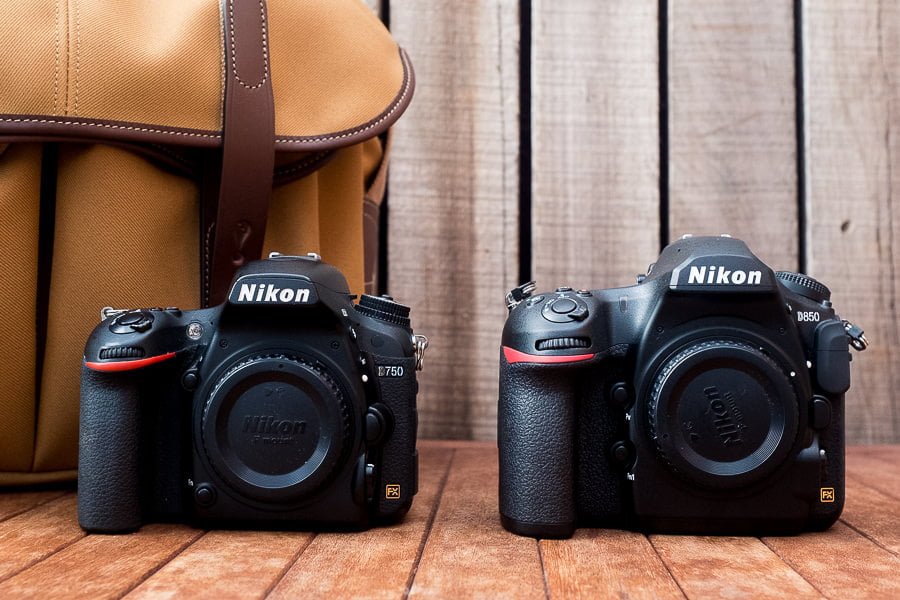
DSLRs offer excellent operational speed, but only the more expensive models offer high FPS.
This relates to autofocus speed, frames per second (FPS), and the startup time and general operational speed of the camera.
Most modern cameras around the $500 mark and upward have good enough auto-focus speed for casual use.
DSLRs and mirrorless cameras typically offer better performance than compacts and bridge cameras, although it depends on the model.
In general, you need to spend a lot more on a compact camera for it to rival the speed of a larger model.
FPS refers to the number of photos you can take in a row by holding down the shutter button during continuous (aka ‘burst’) mode.
A higher FPS (anything over 5) can be useful for capturing fast moving subjects, but it needs to be coupled with decent autofocus tracking performance to ensure your shots are in focus.
DSLRs that offer high FPS are generally over $1,000, but this isn’t the case with mirrorless – the Sony a6000, for example, costs under $500 and features an impressive 10FPS.
Being able to fire off hundreds of frames isn’t always a good thing – you’ll have lots more photos to examine while editing, and there’s also the question of how fast your buffer can ‘clear’ (i.e. how long the camera will be ‘locked up’ while writing all the images to the memory card).
The overall speed of the camera’s operation is another important factor to consider. Typically, DSLRs ‘wake up’ faster than mirrorless and point-and-shoot cameras.
Video Performance

Most photographers are likely to shoot video on their smartphone for convenience.
All digital cameras shoot video these days, with some offering high-end features such as 4K Ultra HD resolution, multiple frame rates, super slow-motion, high speed recording and time-lapse.
If you choose a model with interchangeable lenses, it’s not hard to get video quality that can rival the very best YouTubers and short-film makers.
The main features to consider if you’re serious about capturing high quality video on your digital camera are:
- Frame rates – 24fps and 30fps are standard. 60fps and higher is great for slow-motion footage.
- Image Stabilization – whether in-body, or in-lens (OIS), image stabilization is essential if you plan to shoot video without a tripod or gimbal.
- 4k video – more resolution = better image quality and the ability to crop more heavily. If this is a feature, just make sure that it can record 4k at 24fps and 30fps.
- External mic input – to get the best audio, you need to be able to plug in an external mic.
- Recording duration – many DSLRs have a limit to how much they can record at one time.
- Rotating LCD – to film yourself, or just to save your neck from craning over all the time while shooting.
- Clean HDMI out – to record to external capture devices.
When choosing a camera for video, try and be honest with yourself…
Are you likely to use a bulky DSLR or mirrorless to capture the occasional footage of your kids playing around?… Or is it more realistic to assume your smartphone will be your first choice?
Personally speaking, I seldom press the record button on any of my cameras. The iPhone can already record high-quality 4k video, so I really don’t see the need.
In addition, editing video can be a painfully slow experience, especially if you don’t own a powerful computer.
Camera Brands
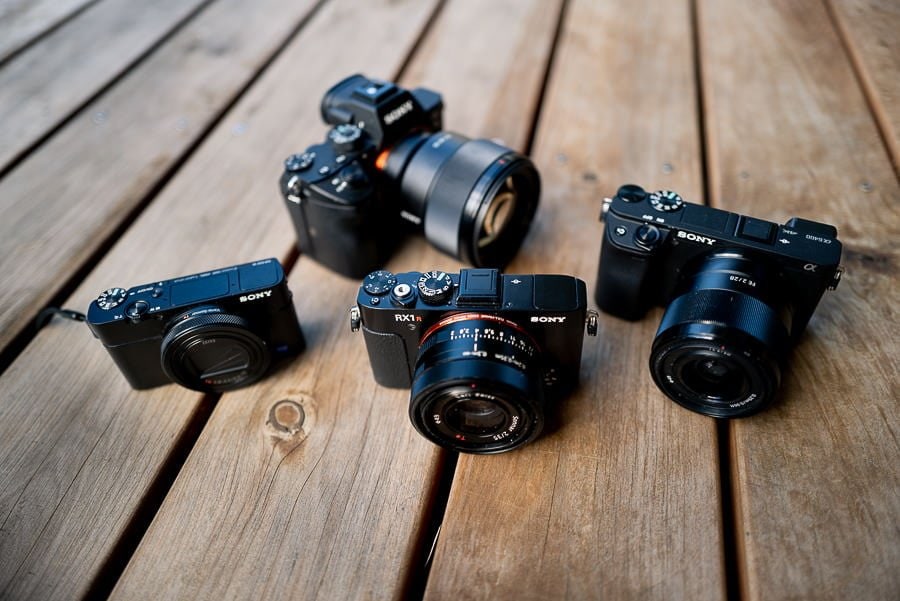
The brand of your camera won’t affect the image quality of the photo.
Although there isn’t really any noticeable difference in the image quality you can expect from the various brands, there are still small nuances to be aware of when choosing your first camera.
Each brand offers its own selection of native lenses which can influence the look of your photos, and in some niche cases, it can determine what exactly you’re able to shoot.
In addition, some brands only produce APS-C sensor cameras, with others only producing mirrorless models.
Let’s take a look at the four main camera brands and their characteristics, starting with the main 2 names in the industry: Canon & Nikon:
Canon

The biggest photography brand in the world, catering to all kinds of photographer, from absolute beginners to the best professionals in the world.
Canon is known for having the widest selection of lenses, including EF, EF-S, EF-M, and R lenses, with the holy grail being any lens with the iconic ‘red ring’, also known as L-series lenses.
Canon DSLR lenses are generally slightly less expensive than Nikon, and there are more specialty lenses – exotic prime lenses with f/1.2 apertures, super tele-photos, tilt-shifts, and other varieties more applicable to professional photographers.
For beginners, there’s a wide selection of affordable lenses, including some excellent options that start from only $100.
Canon produce a diverse selection of cameras (1), with their core sales coming from compacts and DSLRs. You can pick up a great entry-level Canon DSLR for around $500.
One area that Canon is playing catch-up is mirrorless – their first full frame mirrorless model was released relatively recently (in 2018), and their lens selection is still small and expensive.
I’d recommend Canon for compacts and DSLRs. If you’re a professional or have deeper pockets, their mirrorless R-series cameras are a good option too.
Nikon

Another hugely popular photography brand, albeit much smaller than Canon.
Nikon caters to all photographers, offering some of the best entry-level DSLRs for beginners, all the way up to incredible flagship bodies for professionals (2).
Nikon also offers a huge selection of DSLR lenses, although smaller than that of Canon. For beginners, there are many affordable lenses on offer, starting from around $100.
Nikon produces ‘DX’ and ‘FX’ format lenses, which refer their compatibility with APS-C and full frame sensor formats, respectively.
You’ll find a diverse selection of Nikon cameras, with the most popular being compacts and DSLRs. You can pick up an excellent entry-level Nikon DSLR for around $500.
Nikon’s foray into the world of full frame mirrorless was also relatively recent (2018), and their body and lens selection is limited and expensive.
(Similar to Canon, you have the option of ‘adapting’ the existing selection of DSLR lenses to be used on the latest mirrorless camera bodies.)
I’d recommend Nikon for their excellent D-series DSLRs. If you’re a professional or have deeper pockets, their mirrorless Z-series cameras are also impressive.
Sony

Sony is the key player when it comes to mirrorless and premium point-and-shoot cameras.
Their Cyber-shot line of compact cameras is still hugely popular, with new models being released several times a year (3).
Sony cameras are known for having the latest fancy technology, with their range of Alpha mirrorless cameras dominating the industry in auto-focus performance.
Sony full frame mirrorless cameras also offer the best battery life out of any other brand in the industry.
Sony offer a broad selection of lenses, but it pales in comparison to that of Nikon and Canon. Lenses are typically more expensive too, with less options for beginners.
However, you can still choose from a range of affordable entry-level APS-C mirrorless cameras, and some truly class-leading Sony Alpha full frame cameras, if your budget allows.
Fujifilm

Another key player in the world of mirrorless, Fujifilm is perhaps best known for its instant cameras and film stock.
A key distinction of Fujifilm mirrorless cameras is their APS-C sensor size.
They also produce medium format sensor cameras (larger than full frame), but they don’t produce anything with a full frame sensor.
The hugely popular Fujifilm X-series cameras feature a unique retro-inspired look, as well as ‘film simulations’, which accurately replicate popular Fuji film stock. This makes them a popular choice if you want to skip the photo editing process.
Fujifilm offer some excellent lenses, although the selection is not as broad as that of Sony.
In addition, due to the ‘crop-factor’ of their APS-C sensor cameras, you’ll need to take into account a focal length multiplication factor of 1.5x when selecting lenses.
While Fujifilm offer a fine selection of cameras (4) with new models appearing several times a year, their entry-level offerings start at a slightly higher price than those released by Sony.
The aesthetics of Fuji cameras is a big reason to invest in this brand – their cameras look and feel great, and have earned legions of devoted fans.
Resolution (Number of Megapixels)
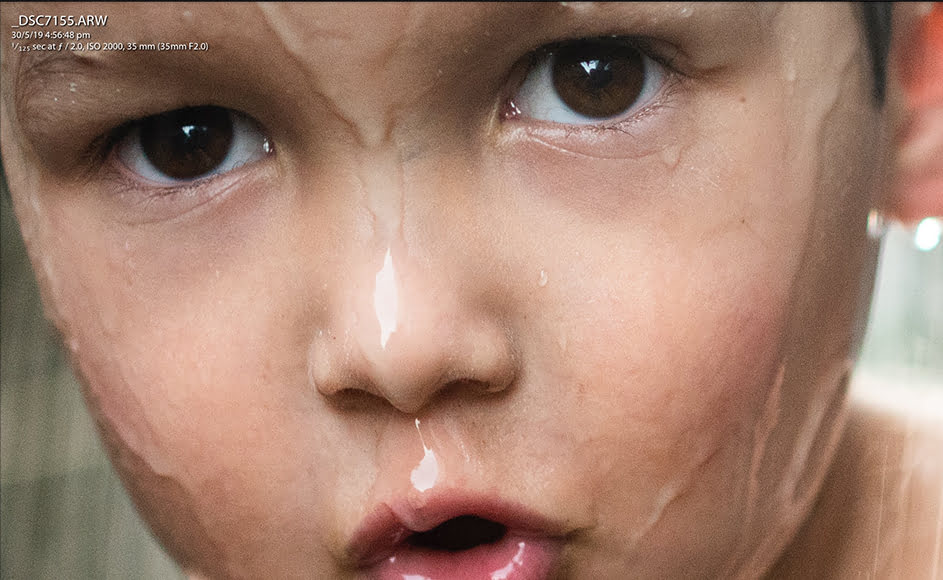
More megapixels allow you to crop your images more heavily while editing.
The resolution of digital cameras is measured in megapixels – one megapixel = one million pixels.
When it comes to digital cameras, a high number of megapixels matters most when ‘cropping into’ a photo, or if you plan to print large pictures.
Photos with more megapixels have more detail, but are consequently larger in file size, meaning they can take longer to edit, send, store, and handle in general.
Most cameras have the option to choose lower resolutions if desired, which can be handy when transferring to smart devices to share online.
People often mistakenly evaluate a camera’s image quality by the number of megapixels, but this is not the case. Pixel size is more important, and this is governed by the size of the image sensor.
Your fancy smartphone with 50 megapixels will never compete with a great DSLR with ‘only’ 24 megapixels, since the DSLR sensor is much bigger.
Don’t make the number of megapixels be a determining factor when shopping for a camera.
Unless you plan to print large, highly detailed prints, there’s little need to invest in a camera with more than 20-odd megapixels.
Other Features

Wifi image transfer and in-camera film simulations can be fun, but their absence aren’t deal-breakers.
These are the features that will help you make your final decision when choosing a new camera.
None of them are essential, and only you will know whether they’re truly important when making your final decision.
- Long Battery Life – mirrorless and point-and-shoot cameras typically have much shorter battery life than DSLRs.
- Manual Shooting Modes – if you’re interested in learning about photography, a camera with a Manual shooting mode is essential.
- Auto Modes – how much you can leave to the camera’s ‘brain’.
- High Frame Rate – being able to shoot multiple consecutive photos can be useful for capturing fast-moving action
- High ISO Performance – helps you capture images in low light without using a flash.
- Rotating/Tilting LCD Screen – useful for selfies and getting experimental with your compositions.
- Dual Memory Card Slots – instant backup, but only really relevant if you’re a professional.
- Mic Input/Output – required if you’re serious about video recording.
- Film Simulations – unique to Fujifilm cameras, but other brands offer creative effects and filters.
- Touch Screen – being able to use smartphone gestures on your camera can be fun.
- Eye/Face Tracking Autofocus System – advanced autofocus technology that’s limited to mirrorless cameras.
- Electronic Viewfinder – an ‘EVF’ can display more information than an ‘OVF’, and offers a WYSIWYG view.
- Image Stabilization – essential for smoother video recording and handheld shooting.
- Weatherproofing / Dustproofing – useful if you travel a lot or shoot in all weather.
- RAW Image Format – RAW files offer more flexibility when editing. See RAW vs JPEG.
- Wifi, Bluetooth, NFC – transfer images wirelessly to your devices, and/or control your camera remotely.
Camera brands try to compete by introducing fancy new features, but my advice is to make your decision based on the core elements mentioned in this article.
Essential Camera Accessories
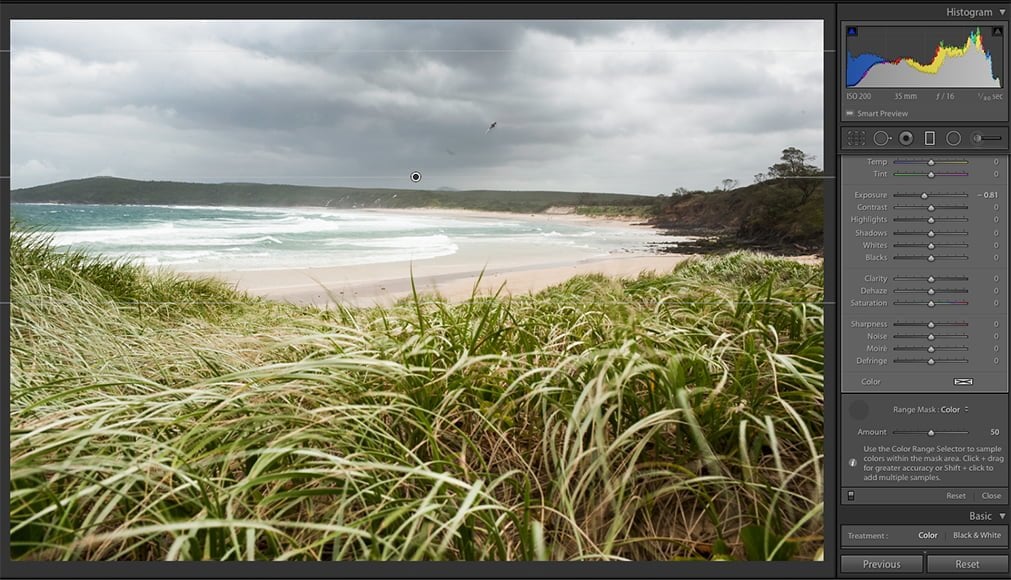
Taking the photo is only half the battle – you need to learn to edit too.
While it’s important not to go too crazy with accessories when purchasing your first camera, there are a few things that I consider essential:
- Software – you need to learn how to edit photos if you want them to stand out. I recommend Adobe Lightroom, but there are also many good alternatives.
- Memory Card – get the fastest one you can afford, and a fast memory card reader. See memory card guide.
- Spare Batteries – especially for mirrorless cameras.
- Screen Protector – cheap way to prolong the life of your camera’s rear LCD screen.
- Camera strap – see our guide to the best camera straps
- Camera bag – not necessary for point-and-shoot cameras. See our guide to camera bags.
… and that’s it :-)
A common mistake made by beginners is buying everything in the bargain bin at the local camera store, but in reality, very few accessories are actually required at first.
When you start developing your style and realise what kind of photography interests you, that’s where some of the following accessories will become useful.
Optional Camera Accessories
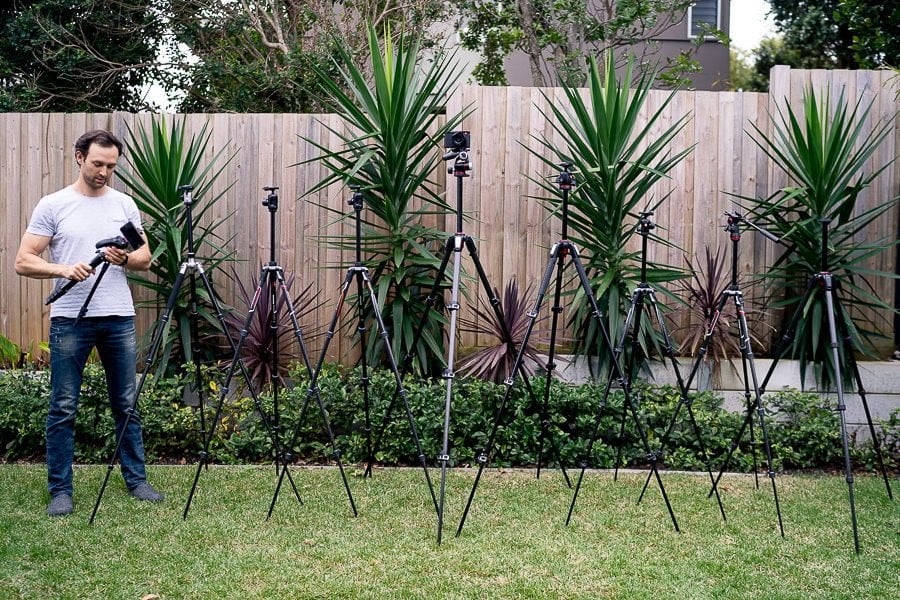
A tripod can be a worthwhile investment if you require a steady shot.
I’ve tried to list these in order of importance to the average beginner photographer who’s looking to expand his/her repertoire:
- Tripod – for long exposure photography or simply getting a sharper shot. See best travel tripods.
- Filters – attach to the front of your lens for various purposes, including UV, ND, Polarizing, etc.
- Cleaning accessories – consider a lens pen, rocket blower and microfiber cloth.
- Battery grip – to extend the battery duration and/or to give large hands more to hold onto.
- External flash – the tiny one on top of your camera gives unflattering results.
- Remote Control – to trigger your camera from a distance. Good for selfies and group shots.
Remember – the more accessories you have, the heavier your camera bag… and the less likely you are to take your camera with you!
Photography is all about simplicity – it’s best when it’s just you and the camera. Don’t go overboard with gadgets ;-)
Photographers have a name for buying camera gear just for the sake of it – ‘Gear Acquisition Syndrome’, or G.A.S. for short!
Make sure you don’t develop a bad case of GAS…
Where to Buy your first Camera
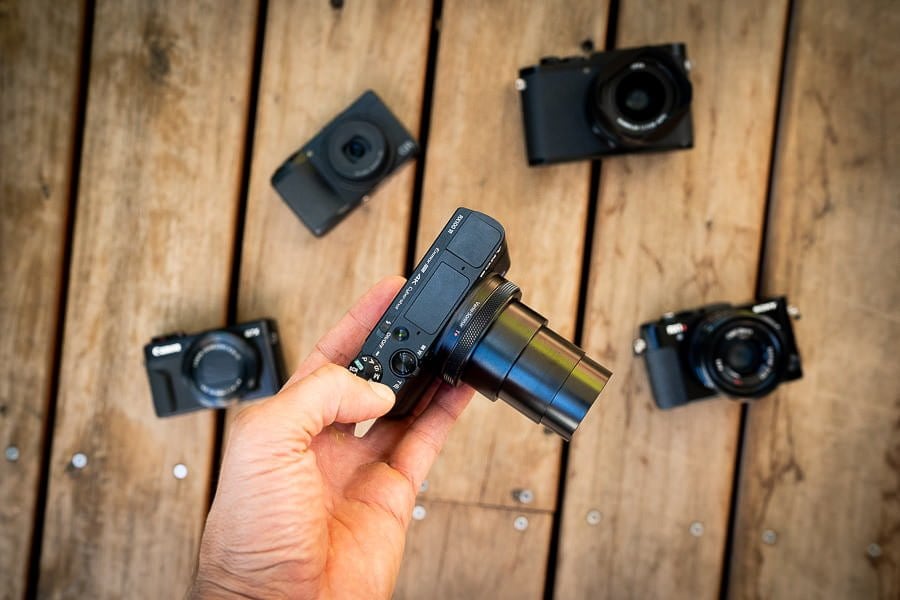
Purchasing cameras online is simple and convenient.
Following a recent poll in the Shotkit Facebook Group, I learned that people buy cameras from a wide variety of local high street shops and online retailers.
My preference is to buy from Amazon, B&H Photo and Moment.
Amazon is great if you have Prime; B&H Photo is great if you need something specific related to photography; and Moment is unbeatable for its personal service and occasional special offers.
Pro tip: Moment actually have a ‘Clearance’ section with massive discounts, which is somewhat hidden away on their website – you can see the latest deals here.
Obviously, you can’t touch and feel products if you purchase online, but at least all the online retailers mentioned above have free returns, allowing you to try out the camera and exchange it for another if necessary.
Camera Buying Guide FAQ
What sort of digital camera should I buy?
If you’ve been asking yourself “What camera should I buy?” here’s my take. Buying your first camera can be a little intimidating, so I’ve got two pieces of advice that will help you pick the right camera for you. The first two things that you should consider are your budget and your goals as a photographer.
Aspiring pro photographers and committed hobbyists should pick up a DSLR or a mirrorless camera. Either way, it should have interchangeable lenses. These cameras can be more expensive, but consider it an investment in your career and your art.
If you’re just looking for a camera to capture memories on a family vacation, you can pick up something a bit more lightweight like a pocket camera. Pocket cameras are much more affordable, but they lack the technical power of more expensive gear. The important thing is to pick the camera that suits your needs.
Videographers should look for cameras that can shoot 4K and and have a few options for frame rate like 24 FPS for the cinematic look and higher frame rates for things like slow motion shots.
Can you buy a digital camera through your business?
Buying a camera is a great idea for small business owners.
If you’re a business owner and you use a camera as part of your work, you can expense the cost of photography equipment. However, keep in mind that the tax breaks you get vary from location to location and even industry to industry.
If you happen to work for a larger company, you still might be able to pick up a camera through your employer. You could need a camera while working in a marketing department or to document certain aspects of your work. I’d say your best bet is to reach out to your marketing department or talk with your finance department about expensing the purchase of a camera.
Is buying a camera worth it?
Yes, buying a camera is definitely worth it! You’ll get high-quality pictures with more creative freedom, as some camera settings aren’t available on smartphones.
Are expensive cameras worth it?
Yes, expensive cameras are worth it. However, you won’t be able to get the most out of an expensive camera if you don’t have some experience. If you’re just starting out, choosing an affordable option first is best.
How to choose a digital SLR?
To choose a digital SLR camera, you need to keep a few factors in mind. These factors include the sensor size, megapixels, and price, among other things.
What sort of digital camera should I buy?
Regarding what digital camera you should buy, there’s no one-size-fits-all option. Essentially, it all comes down to your needs. Use an affordable entry-level camera if you’re a hobbyist or a beginner.
On the other hand, if you want high-quality results, pick a professional camera like the Sony A7R IV or Nikon Z9.
Can you buy a digital camera through your business?
Yes, it’s possible to buy a camera through your business. However, it’ll be a company purchase for company needs such as product photography, marketing, or documenting events.
If you want to purchase a digital camera for your personal use, then you’ll have to pay for it yourself.
Final Words
If you’ve read this far, you should be MUCH better informed to go camera shopping!
Don’t worry too much about the various camera types on offer here in 2024 – at the end of the day, you can get a great image on a compact, mirrorless or DSLR.
It’s easy to get caught up in camera sensors, zoom lenses, image stabilization, shutter speed, camera body type, exposure settings, optical zoom, viewfinder features, video quality, kit lenses, video mode, sensor sizes, zoom range, and every other variable under the sun.
Just remember this – every camera is different, but your skill as a photographer is far more important than the camera body.
Buy a camera, learn how to use it, and experiment until you reach its limitations. Then, and only then, think about upgrading.
Leave me a comment below if you have any questions, and happy snapping!
References: (1) https://www.usa.canon.com/internet/portal/us/home/products/groups/cameras
(2) https://www.nikonusa.com/en/nikon-products/cameras.page (3) https://www.sony.com/electronics/interchangeable-lens-camera-products/t/interchangeable-lens-cameras (4) https://www.fujifilm.com/products/digital_cameras/






